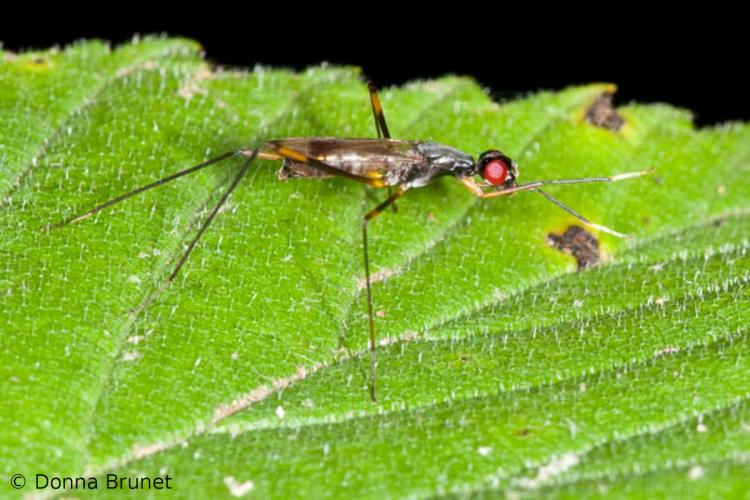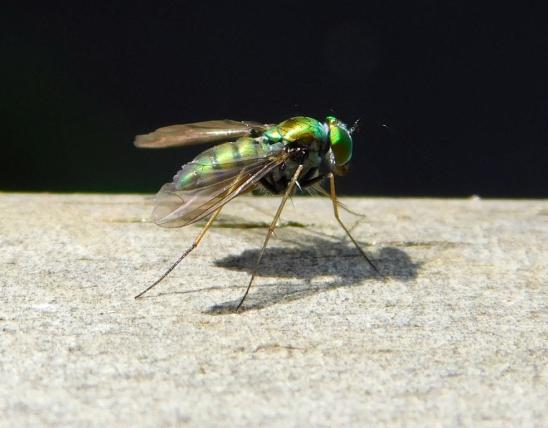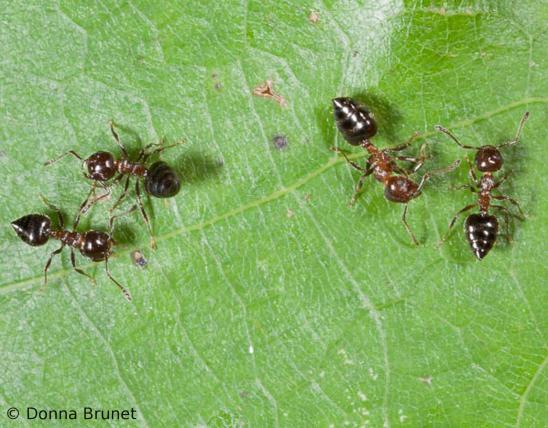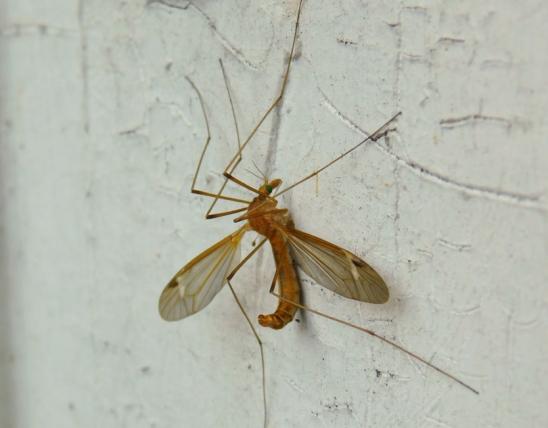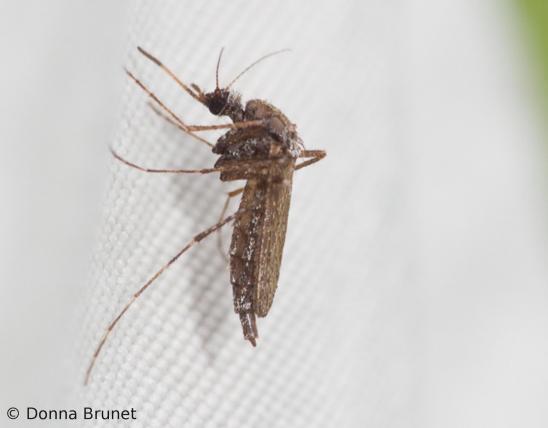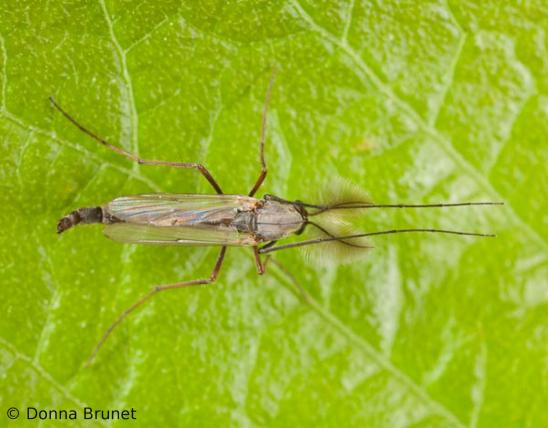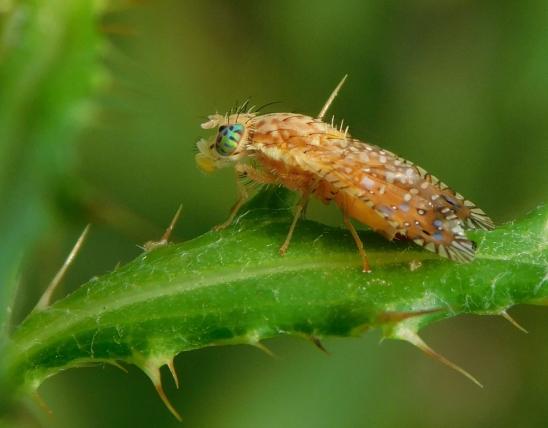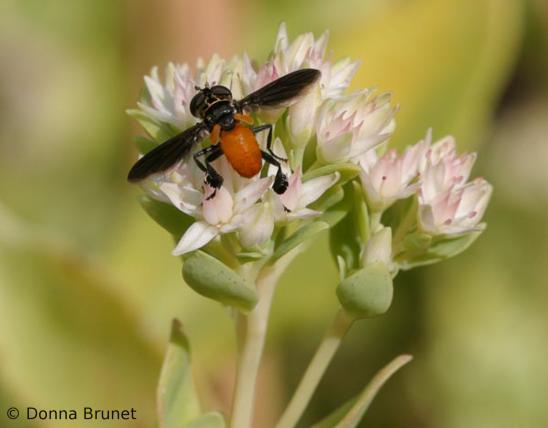
Stilt-legged flies are a family of true flies. These slender-bodied flies are harmless, but most species resemble ichneumon or other wasps, or ants. The middle and back pairs of legs are exceptionally long and thin, while the front pair of legs are much shorter. Remember that true flies have short antennae. Members of this group, however, often walk around with the front pair of legs held forward, resembling antennae. In many species, the legs, body, or both are banded with black and yellow or orange. The forelegs, especially, may have markings that draw attention to them. The wings are narrow and in most cases are folded flat along the back. A close look at the eyes shows the characteristic large compound eyes typical of members of the true fly order (Diptera).
Some common Missouri species of stilt-legged flies include the following. None have common names.
- Calobatina geometra is mostly black but has yellowish leg bases. The two middle legs, and sometimes also the hind legs, have a black band in the middle of the yellow femur (thigh-like segment). The two forelegs have a white section near the black feet. The eyes are rusty brown and rather dark. The wings are clear.
- Rainiera antennaepes is similar to the above but has brighter red eyes, the front feet have white (not black) tips, and the black portion of the femurs is more extensive. The head is narrower. The thorax is glossy. There is a dark patch on the otherwise clear wings. The species name means "antenna-foot," referring to the forelegs that resemble antennae. Of about 20 species in its genus globally, this is the only one that occurs in North America.
- Taeniaptera trivittata has a nifty way of mimicking ants: the otherwise clear wings are marked with black dots to resemble an ant's body shape. This stilt-legged fly is mostly black except for white feet on the forelegs and some degree of rusty or yellowish coloring and sometimes subtle banding on the other legs. The eyes are dark rusty brown. The body is not glossy.
Similar species: Insects that are most likely to be confused with stilt-legged flies are usually not closely related at all: they are the insects the stilt-legged flies mimic: ichneumons and other wasps, ants, and other long-legged members of the order comprising the bees, wasps, and ants (Hymenoptera).
Length (not counting appendages): ½–¾ inch (varies with species).
Statewide. Different species may have different distributions within the state.
Habitat and Conservation
Stilt-legged flies are most common in wooded, damp areas, such as lowland forests, moist valleys, along streams, in wetlands, and so on. However, being flies, they are capable of flying nearly anywhere.
Food
As larvae, most stilt-legged flies in our area eat decaying materials (they are saprophagous), such as rotting plant materials, decaying fungi, or manure.
As adults, stilt-legged flies in our area usually take nourishment from rotting fruits or manure.
Life Cycle
Like other flies, stilt-legged flies begin life as eggs that were deposited on appropriate food materials. They larvae are grublike; they feed, grow, and undergo a number of molts before pupating and emerging as winged adult flies.
Human Connections
Stilt-legged flies are harmless to people. They help decompose materials, such as rotting fruits or manure, that might otherwise be objectionable by eating it and converting it into their own bodies.
Ecosystem Connections
Whenever you see a harmless insect that wears the colors of something that stings, you probably have an insect that is on the menu for a variety of animals that hunt by sight. No doubt many birds eat stilt-legged flies anyway.
